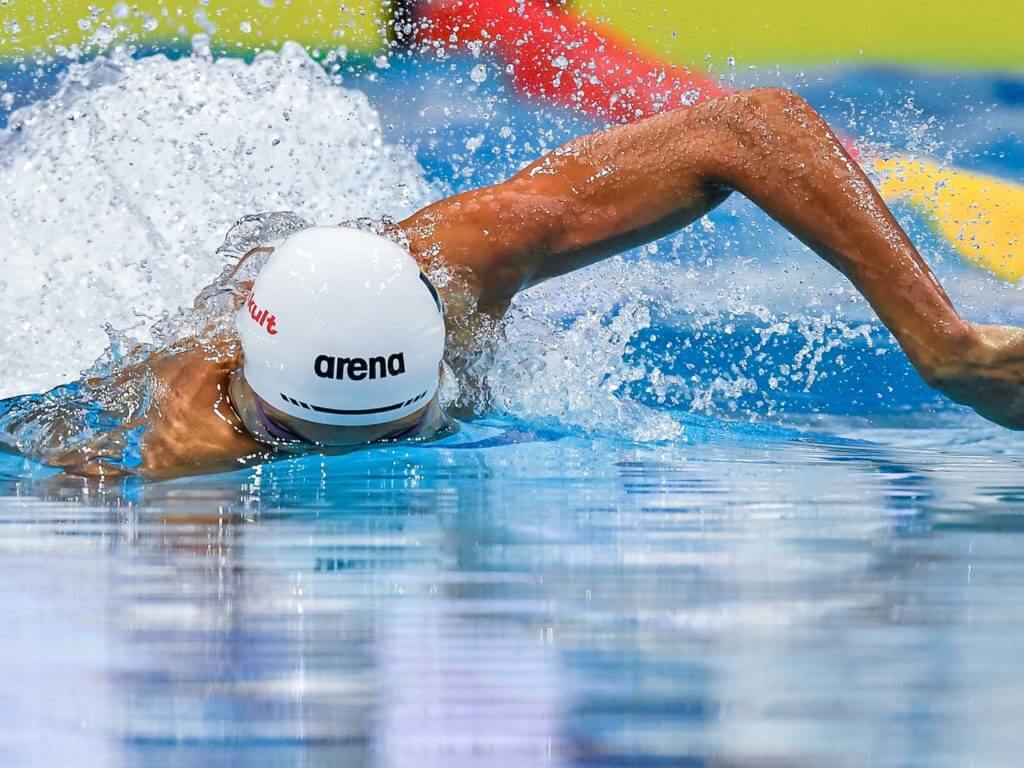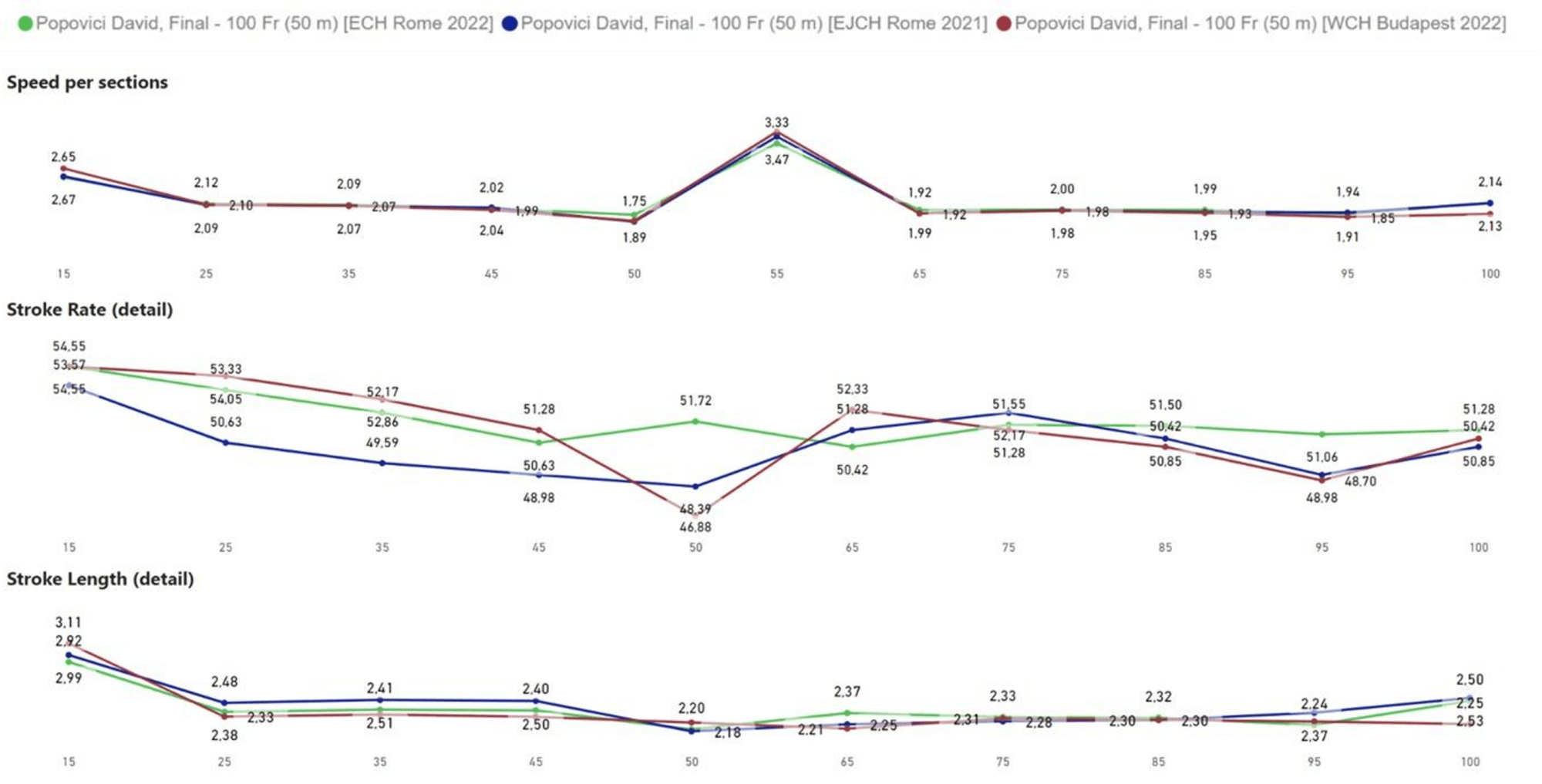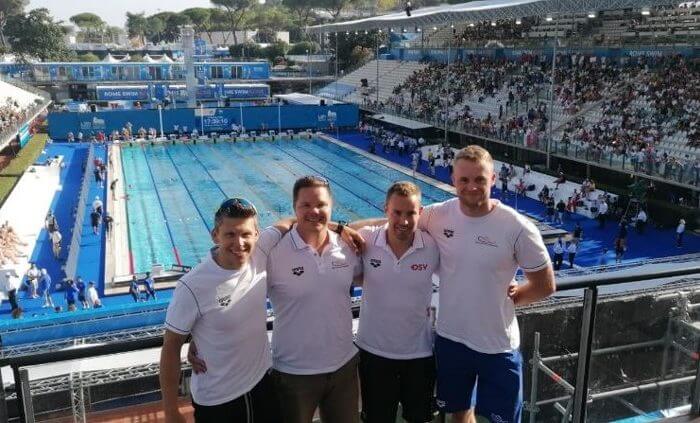A Scientific Analysis Of The Improvement Of David Popovici; How The Teen Set the 100 Freestyle World Record

A Scientific Analysis Of The Improvement Of David Popovici; How The Teen Set the 100 Freestyle World Record
David Popovici: From Rome 2021 to Rome 2022 – From the European Junior Championships To the New World Record In the 100-Meter Freestyle
Same pool – same champion – only one year later. At the European Championships in Rome, David Popovici set a new standard with the fastest 100-meter freestyle performance of all time. The new world record was set just one year after his phenomenal performance at the Junior European Championships in 2021, in the exact same pool. Using race analysis, the present case report aims to find differences between the Rome 2021 Junior European Championships, the Budapest 2022 World Championships, and the Rome 2022 European Championships and assess contributing factors to the new world record in one of the most-decorated swimming discipline.
The Split Times
When comparing the split times of this year’s World Championships with the new world record, the world record race showed a .32-second slower first 25-meter split. This less offensive start allowed David to keep up the momentum and a more constant pace toward the end of the race, that was the section in which he lost .60 seconds at the Budapest 2022 World Championships (Table 1).

Photo Courtesy: Marek Polach
Table 1: 25 m split times.
The Start
In particular, the start (time between 0-15 meters), which was 0.36 seconds faster, contributed to the offensive pacing strategy at the Budapest 2022 Worlds (Table 2). Surprisingly, the start of the new world record race was even .04 seconds slower than that at the Rome 2021 Juniors. However, a higher stroke rate during the following swimming phase (15-25 m) at the world record race means overall 25-meter split time was .02 seconds faster than in Rome the year before.

Photo Courtesy: Marek Polach
Table 2: Start analysis.

Photo Courtesy: Marek Polach
Figure 1: Swimming velocity, stroke rate, and stroke length.
The Swim
At both the Rome 2022 Europeans and Budapest 2022 Worlds, David swam with a higher stroke rate than at the European Juniors in 2021, especially in the first half of the race (Figure 1). However, at the Budapest 2022 Worlds, the stroke rate dropped when approaching the wall for the turn (5 in). The short gliding phase before the turn seems to explain the time lost (.30 seconds) during the second 25-meter split. At the Rome 2022 Europeans perfect timing at the wall approach and initiation of the turn rotation with the final arm stroke seems to explain the .30 seconds faster second 25-meter split time compared to the Budapest 2022 Worlds.
Additionally, stroke rate was slightly lower during the third 25-meter section of the new world record, which was compensated for by a longer and more efficient stroke length. However, across the entire second half of the race, stroke rate was more consistent. The drop in stroke rate during the fourth 25-meter section that was evident at the 2021 Juniors and 2022 Worlds was less pronounced during the last 15 meters of the world record race.
The Turn
The turn section (5 in+15 out) showed the most significant improvement during the world record race, which was .33 seconds faster than at the Rome 2021 European Juniors and .26 seconds faster than at the Budapest 2022 Worlds. A more detailed analysis shows that optimal timing of the last arm stroke with immediate initiation of the rotation, higher stroke rate when approaching the wall, and faster rotation times (.23 seconds and .12 seconds) resulted in .21 seconds and .18 seconds faster five-in times compared to the Rome 2021 European Juniors and Budapest 2022 Worlds, respectively. This may explain the fairly large difference in the second 25-meter split times. Although the five out times were only slightly slower at the Rome 2022 Europeans, visual observation of the video footages showed an early initiation of the first undulating kick. As the velocity would still have been high from the wall push off, the increased frontal drag from the first underwater kick may have surpassed its benefit (Table 3).
Another important difference was found in the 5-15 meters out turn section, in which David was .18 seconds faster during the new world record trial compared to both the Rome 2021 European Juniors, as well as Budapest 2022 Worlds. The visual frame-by-frame inspection of the video footages show that David’s first flutter kick breaks the water surface in every race. However, a less pronounced first flutter kick in the Rome 2022 Europeans may have resulted in a more efficient transition to the first swimming stroke.

Photo Courtesy: Marek Polach
Table 3: Turn analysis.
Author details
- Marek Polach, Jakub Brezina, Jan Krenik (Swim analysis company ‘Umimplavat.cz’ which is providing race analyses for the Austria, Czech and Slovakia swimming federation)
- Dennis-Peter Born (Swiss swimming federation, Swiss federal institute of Magglingen)
This case report was supported by swim analysis company Umimplavat.cz, which is providing race and technical analyses as well as consulting services for individual swimmers and national teams.
Contact email: marek@umimplavat.cz
Instagram: @umimplavat.cz

Photo Courtesy: Marek Polach
Acknowledgements
This article was written in loving memory to our friend Stefano Nurra, who was our mentor, inspired us in our work and was always open to share such important details to coaches and swimmers.




Great data and Race analysis. Thanks ?